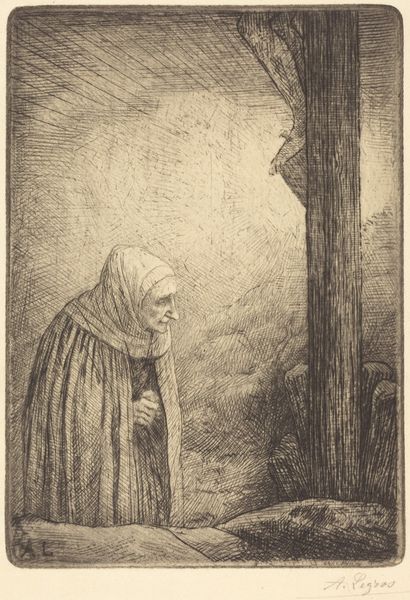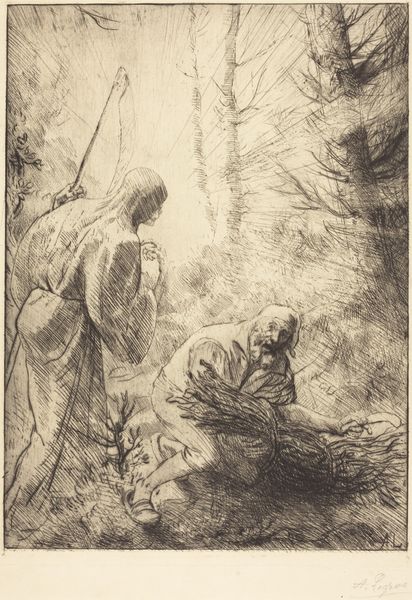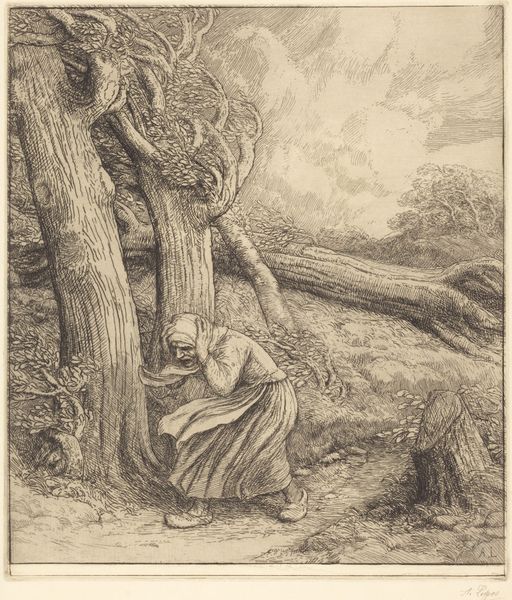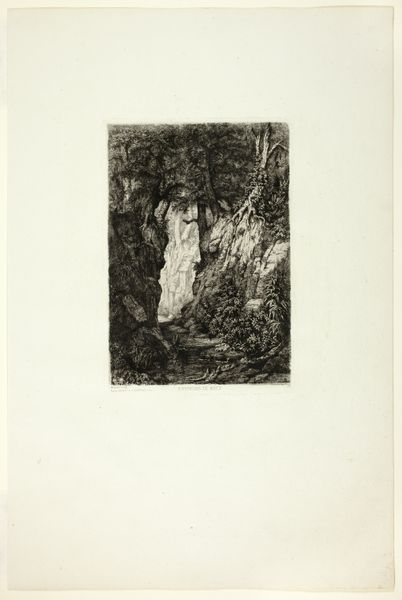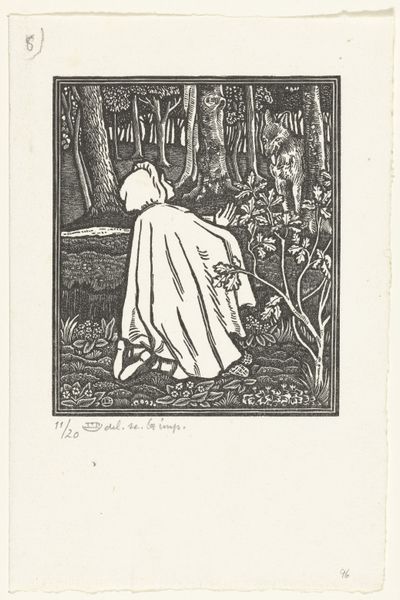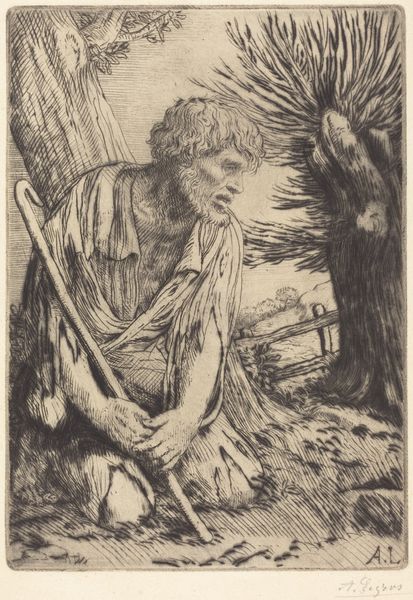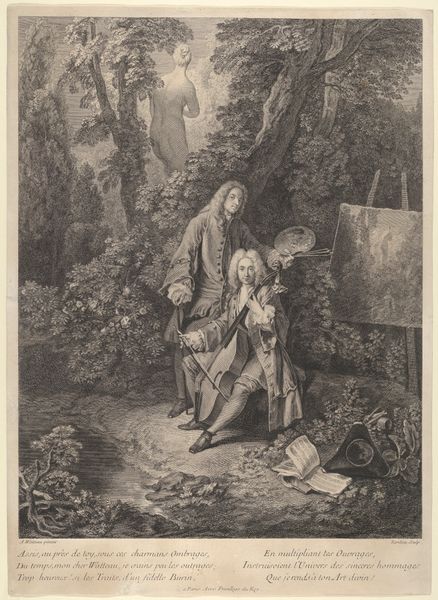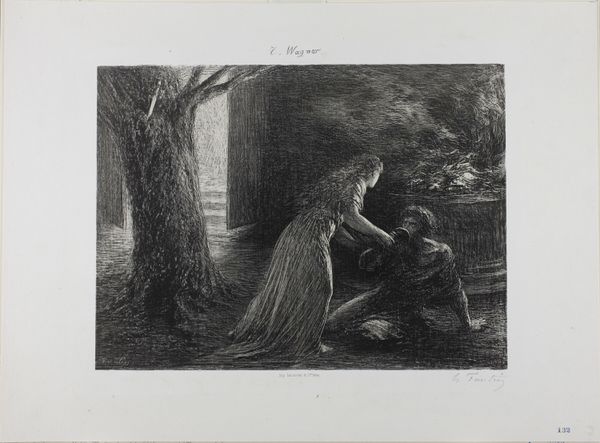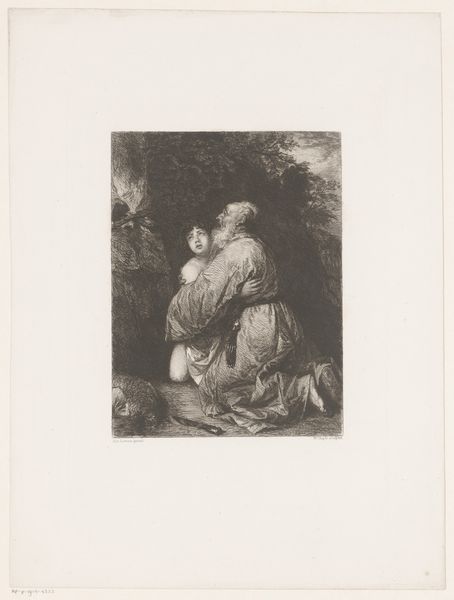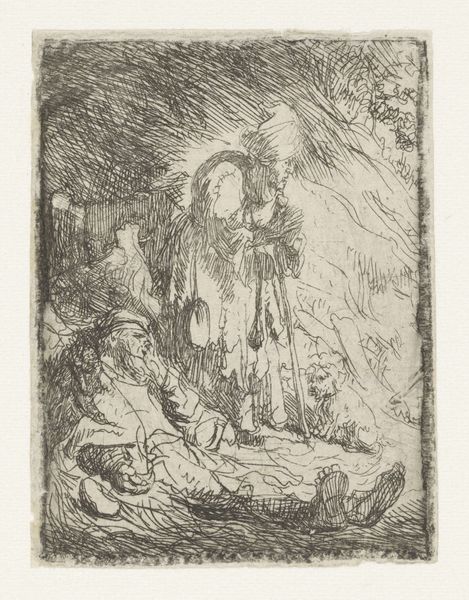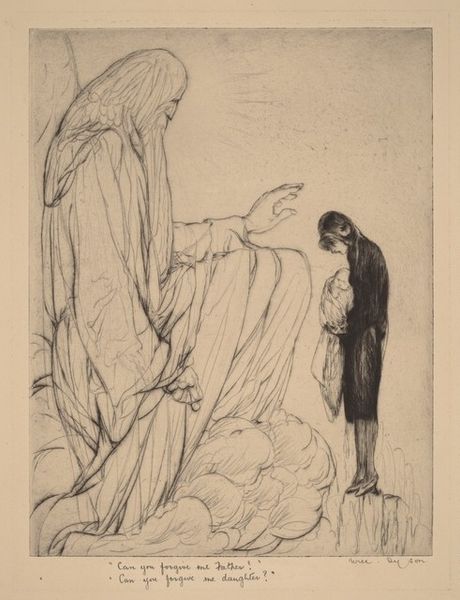
drawing, print, etching, paper
#
drawing
#
narrative-art
# print
#
etching
#
landscape
#
figuration
#
paper
#
france
#
history-painting
#
realism
Dimensions: 255 × 207 mm (plate); 342 × 268 mm (sheet)
Copyright: Public Domain
Editor: This is Alphonse Legros's etching from around 1880, titled "The Tree of Salvation." The somber scene with the women huddled by the tree evokes such strong emotions, grief and maybe despair? How do you interpret this work? Curator: Indeed. Look closely at the tree itself. The accumulation of written prayers and simple crosses transform it into a locus of both personal grief and collective hope. The tree becomes a living record of community memory, wouldn't you agree? Editor: Absolutely. And the women’s postures… they’re so expressive even though their faces are obscured. The woman covering her face, is it simply sorrow? Curator: Perhaps more than that. Consider the cultural weight of mourning rituals, especially in rural communities. The act of veiling, the specific gestures, these are visual cues that signal not just individual pain but a shared understanding of loss. What stories do you think these women carry within them? What past does the scene invoke for them? Editor: That makes me wonder what specific historical event or collective trauma Legros might be referencing here. Or is it meant to be universal? Curator: Possibly both. The specific and the universal often intertwine in powerful images. The image can act as a repository for countless personal and collective stories of hardship throughout time. It's almost as though we’re looking at a landscape of memory itself. Does seeing the etching that way change your impression of it? Editor: It definitely does. I had focused on the immediate emotion, but now I see a much deeper layering of meaning. Curator: And isn't that the magic of images, really? Their ability to hold so much, to resonate across time and connect us to a shared human experience?
Comments
No comments
Be the first to comment and join the conversation on the ultimate creative platform.
